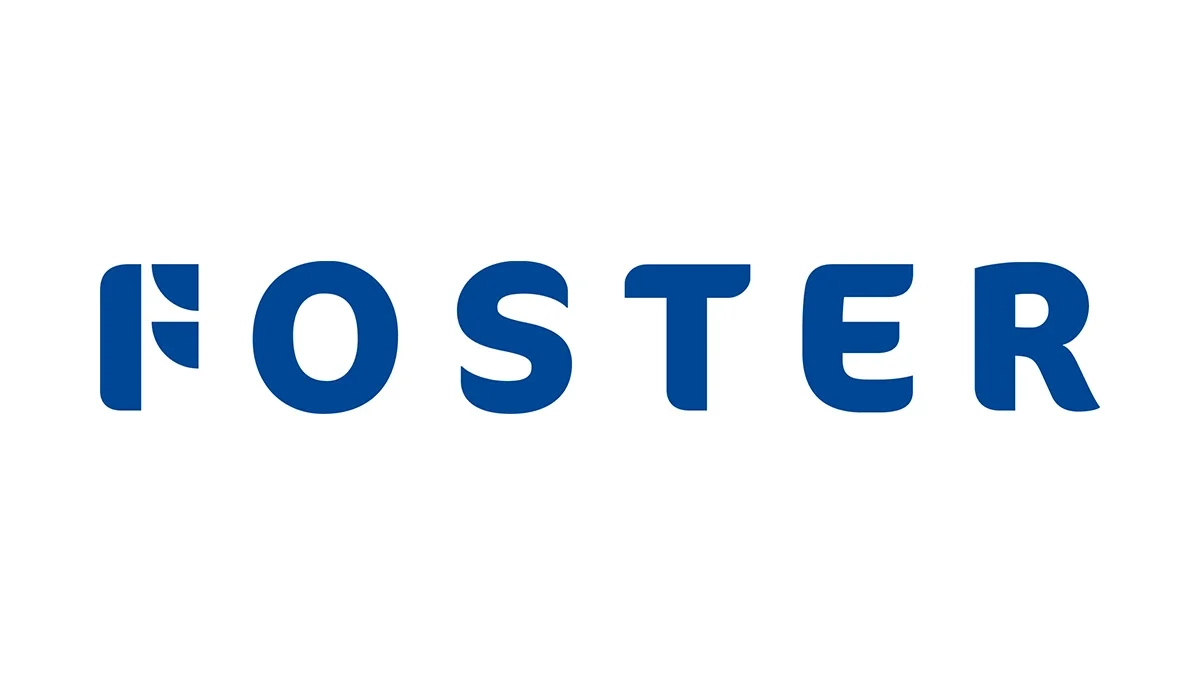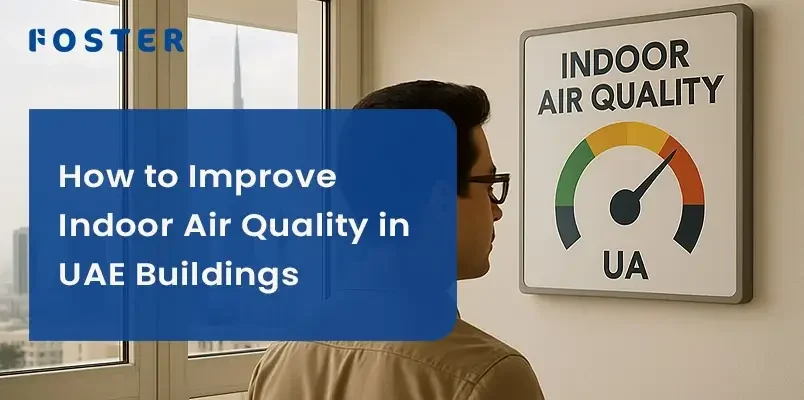Your health is at risk every breath you take indoors. In the UAE, where extreme heat forces us to spend over 90% of our time in sealed, air-conditioned environments, the air you breathe can be up to 5 times more polluted than outdoor air. This isn’t just uncomfortable – it’s dangerous. Poor indoor air quality causes immediate symptoms like headaches, fatigue, eye and throat irritation, coughing, skin reactions, and reduced concentration. Long-term exposure leads to serious health risks including respiratory diseases, heart problems, cancer risk, and immune system damage.
The UAE’s harsh desert climate creates unique indoor air quality threats that make these health risks even more serious. Sandstorm infiltration increases particulate matter in buildings, causing respiratory inflammation and breathing difficulties. High humidity levels promote dangerous mold growth, triggering severe allergic reactions and respiratory problems. Sealed buildings designed for energy efficiency trap volatile organic compounds (VOCs) from construction materials, paints, and furnishings, creating a toxic indoor environment. Additionally, extreme AC usage reduces fresh air circulation, concentrating these pollutants and making indoor air up to five times more contaminated than outdoor air.
Modern HVAC systems, smart filtration, and IoT-based IAQ sensors provide comprehensive solutions. This comprehensive guide reveals how to improve indoor air quality with HVAC systems, covering everything from commercial air purification systems in Dubai to energy-efficient implementation strategies that reduce costs while ensuring compliance.
Understanding the Root Causes of Poor Indoor Air Quality in UAE
Several factors contribute to indoor air pollution in UAE buildings:
- Outdoor Pollutants: Buildings without proper filtration are susceptible to infiltration from external sources like dust, sand, vehicle emissions, and industrial by-products.
- Indoor Sources: Issues such as CO2 accumulation, VOCs from paints and cleaning products, mold due to humidity, and insufficient ventilation contribute to poor indoor air quality.
- HVAC System Design: Many HVAC systems in desert environments lack modern filtration or humidity control, exacerbating air quality problems.
- Maintenance Deficiencies: Neglected and poorly maintained systems, including outdated filters and clogged ducts, lead to a decline in air quality over time.
To combat this, UAE developers are turning to smart HVAC services and air purification strategies to maintain air cleanliness and regulatory compliance.
Step-by-Step: How to Improve Indoor Air Quality in UAE Buildings
Step 1: Assess Current Indoor Air Quality
- Use real-time PM2.5, CO2, and VOC sensors.
- Perform professional air sampling at multiple facility locations.
- Identify IAQ hotspots with smart monitoring tools.
Step 2: Upgrade Your HVAC System for Air Quality
Modern HVAC systems with advanced filtration, inverter technology, and fresh air intake can significantly improve IAQ.
- Replace old AHUs with high-efficiency air handling units.
- Use HEPA filters, UV-C lamps, and activated carbon filters.
- Ensure systems are UAE climate-optimized.
Step 3: Enhance Ventilation Systems
- Add Energy Recovery Ventilators (ERVs) or Heat Recovery Ventilators (HRVs).
- Deploy Demand-Controlled Ventilation (DCV) based on occupancy and CO2.
- Increase Air Changes per Hour (ACH) in high-density areas.
Step 4: Implement Smart Filtration Systems
- HEPA: for hospitals, clean rooms
- Activated Carbon: for restaurants and retail
- UV-C: for schools, gyms, and healthcare
Step 5: Control Humidity and Prevent Mold
- Install dehumidifiers to keep RH between 40–60%.
- Use humidity sensors and BMS integration.
- Clean and maintain drainage and duct systems regularly.
For warehouse and industrial zones, follow our emergency heating and ventilation checklist for seasonal changes.
Step 6: Incorporate Smart Building Technologies
- Centralized Building Management System (BMS) integration.
- IoT-enabled IAQ sensors for predictive analytics.
- Smart alerts for filter changes, contamination, and energy optimization.
Energy Efficiency Without Sacrificing Air Quality
Many believe that enhancing Indoor Air Quality (IAQ) leads to higher energy consumption. However, this is a misconception, as intelligent HVAC designs demonstrate the opposite. Systems like Energy Recovery Ventilators (ERVs), Variable Air Volume (VAV) systems, and smart zoning can simultaneously optimize both energy efficiency and IAQ.
Furthermore, automation tools such as occupancy sensors and Building Management System (BMS)-integrated controllers ensure that ventilation is only active when necessary. Advanced filtration chilled water systems offer a dual benefit, effectively balancing air quality with energy conservation.
Essential HVAC Equipment for Superior Air Quality
Commercial vs Residential Air Quality Equipment
| System Type | Commercial Application | Residential Application | UAE Climate Suitability |
|---|---|---|---|
| HEPA filtration systems | Hospitals, clean rooms | High-end villas | Excellent for dust control |
| UV sterilization HVAC | Schools, gyms, offices | Premium homes | Essential for humidity zones |
| Energy recovery ventilators | Malls, offices | Large residences | Critical for energy efficiency |
| Electrostatic air cleaners | Industrial, warehouses | Not recommended | Perfect for dusty environments |
Advanced Filtration Systems
- HEPA filters trap 99.97% of particles as small as 0.3 microns.
- MERV filters provide flexible alternatives based on system limitations.
- Electrostatic cleaners are ideal for dusty environments like UAE.
- Carbon filters effectively remove odors and chemical fumes.
Smart Ventilation Solutions
- Fresh air ventilation systems maintain oxygen levels.
- ERVs/HRVs recover energy while replacing stale indoor air.
- VAV systems adjust airflow based on occupancy and usage.
- DOAS (Dedicated Outdoor Air Systems) ensure outside air treatment.
Specialized UAE Equipment
- UV-C sterilization kills bacteria and viruses in ducts and coils.
- Dehumidifiers prevent mold and condensation.
- Air handling units (AHUs) built for extreme heat and sand infiltration.
Technology Integration
- IoT-enabled monitoring for real-time IAQ tracking.
- Automated system controls for air changes, temperature, and humidity.
- Seamless integration with energy management platforms.
Foster International’s Equipment Portfolio
- YORK air quality solutions: Scalable systems for commercial projects.
- SKM systems: High-efficiency filtration and UAE-specific engineering.
- FOSTER innovations: Customized solutions for desert climates.
Selecting HVAC Suppliers & Vendors in UAE
- Choose certified dealers who understand UAE air quality and regulatory standards.
- Ensure AMC (Annual Maintenance Contract) options are available.
- Confirm the vendor provides installation, training, and after-sales support.
- Avoid incompatible or uncertified imported products.
- Top HVAC equipment suppliers
Maintenance Strategy for Long-Term IAQ
A good IAQ strategy is incomplete without regular maintenance:
- Scheduled Maintenance: Monthly inspections and quarterly audits.
- Filter Replacement: Based on type—HEPA every 6 months, carbon every 3.
- IAQ Audits: Annual reassessments recommended.
- Staff Training: Ensure maintenance staff understand IAQ priorities.
Compliance and Standards in UAE
Stay current with Dubai Municipality air quality guidelines and local building codes that increasingly emphasize indoor environmental quality. Green building certifications like LEED, BREEAM, and Pearl Rating System include specific requirements for indoor air quality that can enhance property value and marketability.
Workplace health and safety regulations require employers to provide healthy indoor environments, making air quality monitoring and improvement a legal as well as ethical responsibility. Document your air quality improvement efforts to demonstrate compliance and commitment to occupant health.
Foster International’s Compliance Support
- Assistance with regulatory paperwork
- Product certifications aligned with UAE standards
- Long-term compliance monitoring tools
Conclusion
Indoor air quality is more than a comfort feature—it’s a regulatory requirement and a key to productivity, occupant health, and building value. From filtration upgrades to smart systems and energy integration, UAE facility managers and developers must act now.
At Foster International, we help UAE businesses achieve better indoor air quality with certified HVAC systems tailored for extreme environments. Contact us for consultations, equipment, or AMC plans today



 Previous Post
Previous Post


